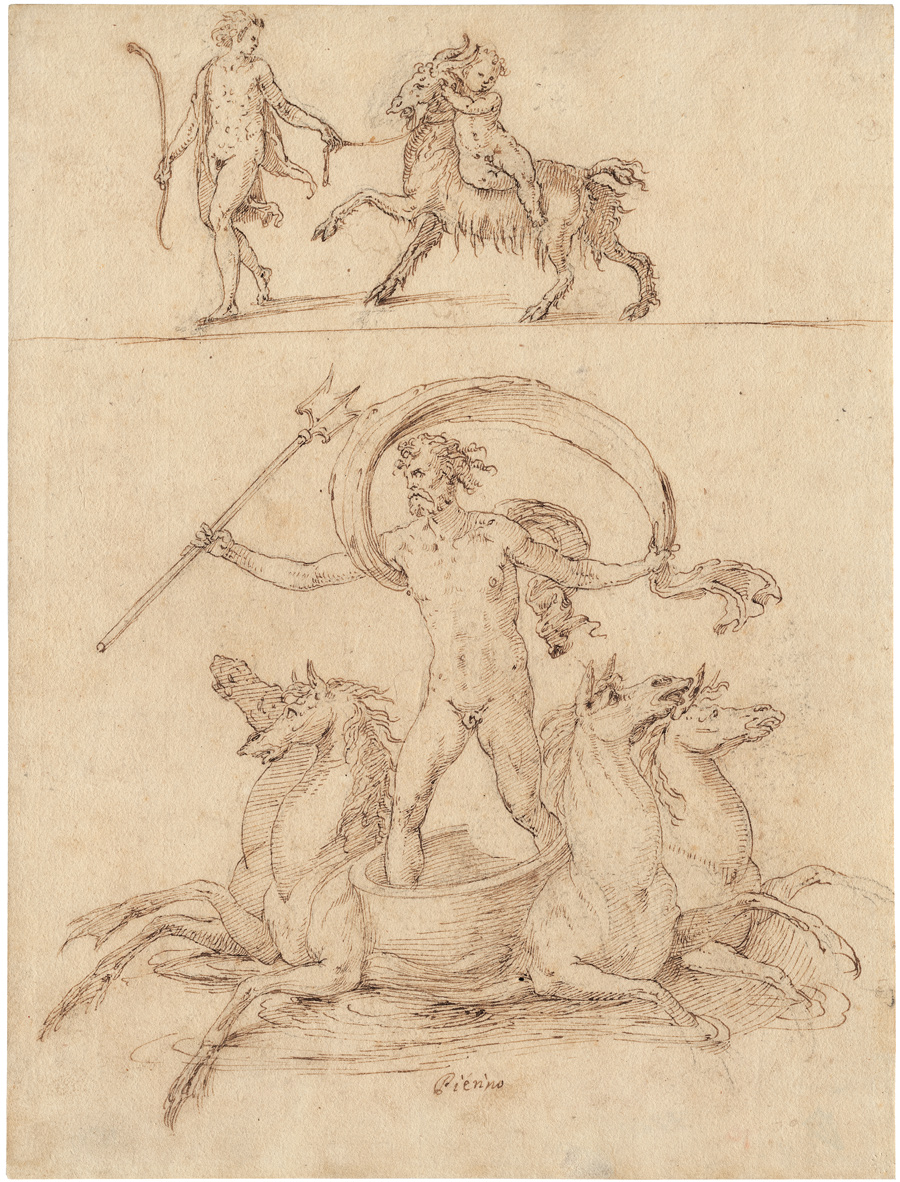Loading the page ...
Luzio Romano
(active ca. 1528 – ca. 1570 Genova and Rome)
Study sheet showing Neptune in a carriage drawn by four seahorses; above, a shepherd and a goat ridden by a putto. Pen and brown ink over black chalk. 29.1 x 21.8 cm. Inscribed below the image: Pierino. Watermark: Anchor within circle with eight-pointed star (Woodward 158 ff: Venice, Rome since 1561).
The painter and stuccoist Luzio Romano was probably a student of Perino del Vaga; Giorgio Vasari reports that he was his assistant on the decoration of the Palazzo Doria in Genoa between 1528 and about 1533. After that Luzio worked from 1545 in Rome, where he initially assisted Perino in the great decorative cycles for the Castel Sant’Angelo. He was also responsible for the decoration of the cappella maggiore in the Church of S. Maria in Via of 1548, since lost. From 1563 we find Luzio Romano working with Daniele da Volterra on the planning and execution of the ceiling of the Basilica of S. Giovanni in Laterano. Other contemporary sources provide evidence of payments to the artist for paintings in the Vatican Loggias.
The present sheet can be closely linked stylistically to a group of decorative designs and ornament drawings ascribed to Luzio Romano by Philip Pouncey and J. A. Gere and housed in the collections of the British Museum and Windsor Castle. A few of theses drawings bear the inscription Pierino by the same hand (see Philip Pouncey and J.A. Gere, Italian Drawings in the Department of Prints and Drawings in the British Museum. Raphael and his Circle, London, 1962, nos. 186–188, pls. 155–158). While a few of these “perinesque” designs can be linked to the decorative cycles in the Castel Sant’Angelo, the majority of the sheets are later, dating to the 1550s and 1560s. At this time Luzio Romano was an experienced ornament painter and stuccoist whose work was in great demand; among his patrons were popes Julius III (1550–1555) and Pius IV (1559–1565). Our sheet is executed in a swift, graceful manner over a subtle preparatory drawing in chalk. The areas of light and shade are defined by simple patterns of parallel hatching. A sheet in the British Museum showing designs for decorative vases is very similar in style; it is almost the same size and bears the same watermark (see Pouncey and Gere, op.cit., no. 187, pl. 156). From the collection of Comte Rey de Villette (Lugt 2200a).
